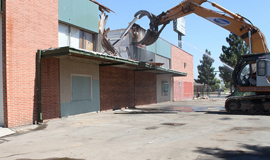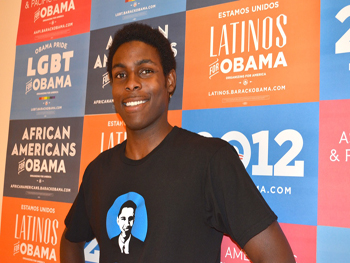 I am only 17 and I’m attending the 2012 Democratic National Convention as the youngest member of the California delegation team. I would have never thought about signing up to go to the DNC without the push from my education mentor Ms. Daphne Bradford. Four years ago, when I was selected to enroll in Ms. B’s 9th grade digital media certification class I couldn’t have imagined that upon graduating high school in June 2012 I would be invited by Organizing for America, the president’s grassroots organizing machine, to go to Charlotte, North Carolina to represent California.
I am only 17 and I’m attending the 2012 Democratic National Convention as the youngest member of the California delegation team. I would have never thought about signing up to go to the DNC without the push from my education mentor Ms. Daphne Bradford. Four years ago, when I was selected to enroll in Ms. B’s 9th grade digital media certification class I couldn’t have imagined that upon graduating high school in June 2012 I would be invited by Organizing for America, the president’s grassroots organizing machine, to go to Charlotte, North Carolina to represent California.
I’ll be 18 years old the day before the November 6th presidential election. My very first vote will be for President Barack Obama, the first African American president of the United States. Most of my peers and students across the nation don’t know they can apply to be a district level delegate, at-large delegate or a member of one of the president’s DNC committees. Ms. B knew I was planning on voting this year so she informed me that I qualified to become a delegate. Running for district level delegate was a fun experience although I didn’t win one of the four male spots for congressional district 37. When I got the call from Ms. Bradford informing me that Mary Jane Stevenson, OFA-California state director had selected me to serve on President Obama’s Credentials Committee as part of the CA delegation team I was pleasantly surprised.
In my government class I learned about delegates going to conventions during general elections but I had no idea that someone as young as myself could be a member of a delegate team. The Credentials Committee handles questions and any problems involving the seating of delegates and alternates at the convention. I will attend committee briefings a few hours after I touch ground in Charlotte, NC. From Sunday, September 2 through Thursday, September 6, when President Barack Obama accepts the Democratic nomination, I will have a say in the DNC decision-making process. I’m excited that my voice will be heard.
Going to the Democratic National Convention will be a learning experience for me because it will be out of my comfort zone. Most young people like myself find politics boring and not as important as it is. This will be the first time that I am a part of a political event of this size, and I think young people such as myself should get more involved in politics because government decisions affect our lives.
As soon as someone turns 18 I believe they should register to vote so they can vote for the person they want in the White House and their communities. Being the fact that I will have the chance to vote this year — because my birthday is the day before the presidential election — I am going to vote for the presidential candidate that is going to try and assist citizens with their financial needs and education. This in turn will benefit me in the long run because I need as much financial assistance as I can get for my college education. I will be a freshman at Cal Poly Pomona this fall.
Since I was involved in politics in the 9th grade, I know which candidate is going to help me with my financial assistance. I’ve been supporting President Barack Obama all this time. The Democratic National Convention allows me to further support the presidential candidate who will assist middle class families like mine. I hope to see other people as young as myself at the 2012 Democratic National Convention in Charlotte, NC.









 Not in South Los Angeles, where property is selling in some areas. Leimert Park-based real estate agent Heather Presha (pronounced Pre-shay) said that homes on the market in her neighborhood and neighboring areas of Baldwin Hills/Crenshaw, View Park, Baldwin Village, Hyde Park, and Jefferson Park are getting 40 to 50 offers each. Open houses are filled to capacity with prospective buyers. “It’s so competitive now, I haven’t made an offer on a home in six months that hasn’t had multiple offers,” said Presha.
Not in South Los Angeles, where property is selling in some areas. Leimert Park-based real estate agent Heather Presha (pronounced Pre-shay) said that homes on the market in her neighborhood and neighboring areas of Baldwin Hills/Crenshaw, View Park, Baldwin Village, Hyde Park, and Jefferson Park are getting 40 to 50 offers each. Open houses are filled to capacity with prospective buyers. “It’s so competitive now, I haven’t made an offer on a home in six months that hasn’t had multiple offers,” said Presha.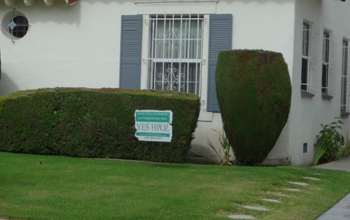 With interest rates at historically low levels of 3% or less, it’s a good time to buy if you can get a loan. Neith said if you’re buying an historic property – one that is in an Historic Preservation Overlay Zone, or HPOZ, or one that is outside an HPOZ but designated historic – then you may qualify for significant property-tax reduction under the Mills Act. The Mills Act allows tax reduction of 50 percent to 75 percent for ten years after purchase. Owners can apply for renewal after the ten-year window. However, all money saved under the act must be used for historical restoration. The West Adams area alone has at least six HPOZs.
With interest rates at historically low levels of 3% or less, it’s a good time to buy if you can get a loan. Neith said if you’re buying an historic property – one that is in an Historic Preservation Overlay Zone, or HPOZ, or one that is outside an HPOZ but designated historic – then you may qualify for significant property-tax reduction under the Mills Act. The Mills Act allows tax reduction of 50 percent to 75 percent for ten years after purchase. Owners can apply for renewal after the ten-year window. However, all money saved under the act must be used for historical restoration. The West Adams area alone has at least six HPOZs.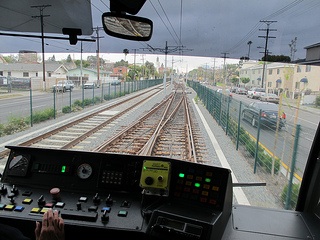 Recent improvements in South L.A. have made it a much more attractive prospect for homebuyers. The recently-contructed light rail Expo Line, which follows an old rail-line cut, is part of what Neith said is an overall feeling of good things happening in the neighborhoods along it. Even those who don’t use it think it’s “part and parcel of progressive improvement in Los Angeles.”
Recent improvements in South L.A. have made it a much more attractive prospect for homebuyers. The recently-contructed light rail Expo Line, which follows an old rail-line cut, is part of what Neith said is an overall feeling of good things happening in the neighborhoods along it. Even those who don’t use it think it’s “part and parcel of progressive improvement in Los Angeles.” 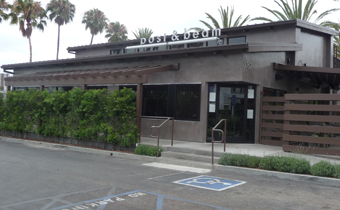 One business that thinks South L.A. is a good investment is the top-rated restaurant Post and Beam, which opened near the Baldwin Hills Crenshaw Plaza mall in 2011. With a star chef who also happens to be a local boy made good—Chef Govind Armstrong grew up in Inglewood—Post and Beam serves a locally-sourced menu driven by ingredients, many of which are raised in the restaurant’s own organic garden. It would be perfectly at home in the moneyed environs of the Westside. Yet it’s filled to capacity weekly by Baldwin Hills locals hungry for quality food and quality places nearby to spend their money in. Real estate agent Presha said, “It’s what we deserved.”
One business that thinks South L.A. is a good investment is the top-rated restaurant Post and Beam, which opened near the Baldwin Hills Crenshaw Plaza mall in 2011. With a star chef who also happens to be a local boy made good—Chef Govind Armstrong grew up in Inglewood—Post and Beam serves a locally-sourced menu driven by ingredients, many of which are raised in the restaurant’s own organic garden. It would be perfectly at home in the moneyed environs of the Westside. Yet it’s filled to capacity weekly by Baldwin Hills locals hungry for quality food and quality places nearby to spend their money in. Real estate agent Presha said, “It’s what we deserved.” Saturday marked the grand opening of the Metro Expo Rail Line.
Saturday marked the grand opening of the Metro Expo Rail Line.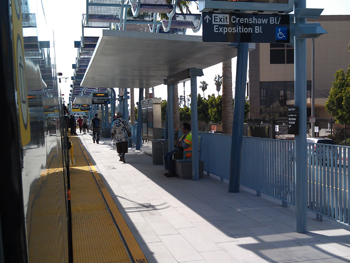 Gerri Williams is from Pasadena and plans on taking the Expo line often. She also decided to take part in the festivities of opening weekend. “I am enjoying it very good. The music is good and it is nice to be outside and seeing all the venders that are here, and being out in the sun!”
Gerri Williams is from Pasadena and plans on taking the Expo line often. She also decided to take part in the festivities of opening weekend. “I am enjoying it very good. The music is good and it is nice to be outside and seeing all the venders that are here, and being out in the sun!”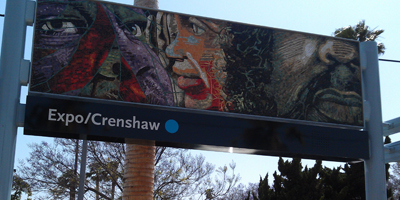
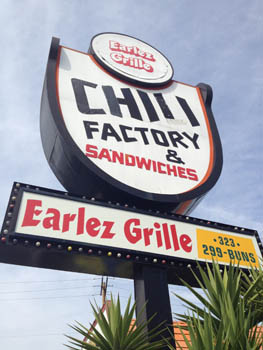 By Ela Bernal
By Ela Bernal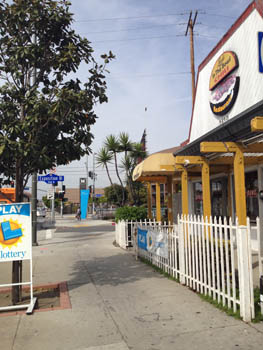 However, when the day does come, the restaurant won’t be going far. “I’d like to stay within 15 minutes from this area,” said Earle.
However, when the day does come, the restaurant won’t be going far. “I’d like to stay within 15 minutes from this area,” said Earle.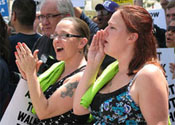 Listen to the audio story from Annenberg Radio News:
Listen to the audio story from Annenberg Radio News: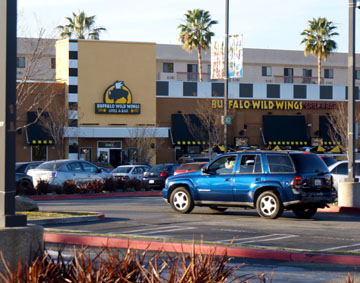 California employees and entrepreneurs were heartened by last month’s revelation that December marked a fifth consecutive month of a declining unemployment rate statewide. Los Angeles’ 8th City Council District, one of the poorest in the city, met the news with guarded optimism.
California employees and entrepreneurs were heartened by last month’s revelation that December marked a fifth consecutive month of a declining unemployment rate statewide. Los Angeles’ 8th City Council District, one of the poorest in the city, met the news with guarded optimism. 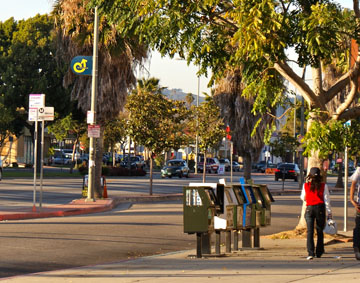 But Parks sees these jobs as the gateway to better employment down the road. “Every job is not a career,” he said. “Every job is not a life-long job. You move to another job. You develop.”
But Parks sees these jobs as the gateway to better employment down the road. “Every job is not a career,” he said. “Every job is not a life-long job. You move to another job. You develop.”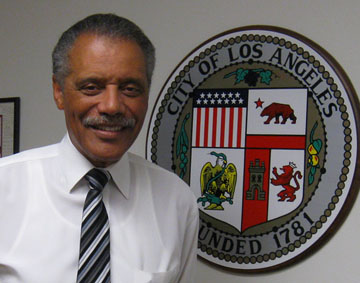 For years, Marlton Square has been an eye-sore for the Crenshaw community. That’s one of the issues City Councilman Bernard Parks will talk about tonight when he delivers the 9th Annual “State of the Eighth” address. Check out an interview with park with Annenberg Radio News to hear about what’s next for the square and Crenshaw.
For years, Marlton Square has been an eye-sore for the Crenshaw community. That’s one of the issues City Councilman Bernard Parks will talk about tonight when he delivers the 9th Annual “State of the Eighth” address. Check out an interview with park with Annenberg Radio News to hear about what’s next for the square and Crenshaw.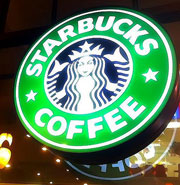 A Starbucks on Crenshaw Boulevard will share $100,000 with the Los Angeles Urban League this year as part of a pilot profit-sharing program.
A Starbucks on Crenshaw Boulevard will share $100,000 with the Los Angeles Urban League this year as part of a pilot profit-sharing program.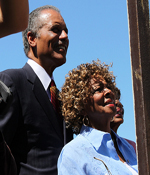 A smiling Bernard Parks watched as an excavator dug its claws into a dilapidated building at Marlton Square, marking what everyone hopes will be a real beginning of a new shopping center. The 8th District city councilman has been assuring Crenshaw residents for years that this day would come. But you could forgive residents if they were skeptical.
A smiling Bernard Parks watched as an excavator dug its claws into a dilapidated building at Marlton Square, marking what everyone hopes will be a real beginning of a new shopping center. The 8th District city councilman has been assuring Crenshaw residents for years that this day would come. But you could forgive residents if they were skeptical.